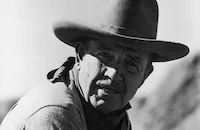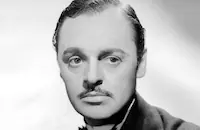Divorce

Brief Synopsis
Cast & Crew
William Nigh
Kay Francis
Bruce Cabot
Helen Mack
Jerome Cowan
Craig Reynolds
Film Details
Technical Specs

Synopsis
After being granted her fourth divorce, socialite Diane Carter decides to leave Chicago and return to her hometown of Hillsboro, Illinois. She soon sets her sights on her childhood boyfriend, Bob Phillips, despite the fact that he has been happily married to his wife Martha for ten years and has two young sons, Bobby and Michael. Her arrival in Hillsboro coincides with Bob and Martha's wedding anniversary, and though Bob does not recognize her at first, Diane quickly acquires the recently returned veteran's total attention. Diane then decides to settle in Hillsboro, and retains Bob's services as a real estate agent to find her an apartment. In order insinuate herself further into Bob's household, Diane asks Martha to help furnish her new apartment. Later, Bob and Diane form a highly successful partnership in real estate development and speculation. While their good friends, Jim Driscoll and Liz Smith, finally announce their long-awaited engagement, Martha begins to realize that she is losing her husband to Diane. Later, Bob and Diane take his two sons on a picnic, and, while his father's attention is on Diane, Bobby is hit by a car as he rides his new bicycle. Afterward, Martha forces Bob to admit his feelings for Diane, so she announces her intentions to seek a divorce. Though her friends try to convince her to change her mind, Martha proceeds with the divorce. Bob is granted only a single Saturday each month to visit with his sons, but he spends the first one in Chicago, gambling with Diane. The two are caught in a police raid, however, and the resulting local scandal jeopardizes their real estate development. In the meantime, Martha rejects Bob's alimony checks, taking instead a job as a clerk in a Hillsboro department store. With the real estate deal going sour, Diane arranges her own financing for the project, over Bob's objections. Bob's investors are then forced to sell out to Diane's people, and despite their significant profits, they voice their disapproval. Bob and Diane make plans to leave Hillsboro, but when he fails to return to her on time from his visitation with Bobby and Michael, Diane rushes to the Phillips home, where she overhears Bob being "court-martialed" by his sons for "desertion." Realizing that she has lost Bob to his family, Diane tells Martha that she is leaving town on the next train. On the way back to Chicago, Diane finally comes to realize the unpleasant type of person she has become.

Director
William Nigh
Cast

Kay Francis

Bruce Cabot
Helen Mack

Jerome Cowan

Craig Reynolds
Ruth Lee
Jean Fenwick
Mary Gordon
Larry Olsen
Johnny Calkins

Jonathan Hale

Addison Richards
Reid Kilpatrick

Leonard Mudie
Virginia Wave
Napoleon Simpson
Crew
Jeffrey Bernerd
Trem Carr
Richard Currier
Kay Francis
Harvey H. Gates
Richard Harlan
Keneth Hopkins
Joseph I. Kane
Edward J. Kay
Tom Lambert
Lorraine Maclean
William Margulies
Dave Milton
Odette Myrtil
Harry Neumann
William Strohbach
Sidney Sutherland
Sidney Sutherland
Vin Taylor
William H. Wilmarth

Film Details
Technical Specs

Articles
Divorce
Opening crawl for Divorce
Kay Francis returned to the vampish roles of her early film career with the 1945 melodrama Divorce, the first film in a three-picture deal she signed with Poverty Row studio Monogram. Although they marked the end of her film career, her three Monogram pictures at least gave her the chance to produce, giving her an independence her work at other studios had never supplied.
It's hard to tell if Francis' three Monogram films were simply an attempt at moving into another area of filmmaking, or a last desperate attempt at regaining the stardom she had lost since her heyday in the early '30s, when she was one of Hollywood's highest-paid leading ladies. Although her films at the studio have been dismissed by some as the worst of her career, others have pointed out that they can't hold a candle for sheer rottenness to her late Warner Bros. films, when the studio seemed to be trying to get the high-priced actress to quit. She had actually enjoyed something of a comeback after leaving the studio in 1939, but when the U.S. entered World War II, she threw herself into USO work. Between 1942 and 1945, she only appeared on-screen as herself, first in the 1943 documentary short "Show Business at War," then in the popular 1944 feature Four Jills in a Jeep, based partly on her experiences entertaining the troops.
Some biographers have suggested that it was the chance to produce that lured Francis to Monogram, which otherwise would have seemed a step down even at that stage in her life. She certainly threw herself into script preparation and worked to keep the budget tight (a necessity at Monogram, though it could also have been a reaction to her major studio vehicles, in which sumptuous costumes and sets often took the place of solid writing). All three of her films there were within a proven B movie genre, the melodramatic exposé. Divorce, her first film, was inspired by the growing divorce rate in the '40s, particularly as returning GIs found little in common with their war brides. Studio publicity also claimed inspiration from an editorial cartoon by Percy Crosby called "Break Up," in which a child was shown torn between mother and father. The film took a decidedly moralistic view of divorce, depicting the disastrous effects when femme fatale Francis returns to her hometown and steals her childhood sweetheart (Bruce Cabot) from his faithful wife (Helen Mack). That viewpoint was in keeping with Hollywood practice; the Production Code, working with the Catholic Legion of Decency, demanded that divorce be treated as a tragedy rather than a sometime necessity. The condemnation of divorce rings a little hollow, however, in a film whose top-billed cast counts seven divorces among them -- five for Francis alone (ironically , the same number as her character).
As co-producer, Monogram teamed Francis with Jeffrey Bernerd who, with the film's director, William Nigh, had brought out such earlier exposés as Where Are Your Children? (1943) and Are These Our Parents? (1944). With Francis' name as a draw, they were able to bring in leading man Cabot, just returned from World War II duty, and character actor Jerome Cowan, who had scored as one of Bette Davis' suitors in Mr. Skeffington (1944). As Cabot's devoted wife, too proud to accept child support when she learns of Francis' crooked real-estate dealings, Mack made her last film appearance. Ironically, she was best known as the leading lady in The Son of Kong, while Cabot was best remembered as the romantic male lead in King Kong (both 1933)
Like most Monogram films, Divorce was only released to less prestigious theatres, but because of its low budget it still turned a profit. Francis would re-team with Bernerd and Nigh for her second feature at the studio, Allotment Wives (1945), a film noir usually hailed as the best of her low-budget films, then work with Bernerd again on her final feature, Wife Wanted (1946). With her contract completed, she turned down further picture offers to return to the stage, bringing to an end a distinguished if little-examined career. Like most of her films, Divorce is not available on DVD and has only rarely been aired on television, making its presentation on TCM an event for the fans she has won since her films started turning up on the network.
Producer: Jeffrey Bernerd, Kay Francis
Director: William Nigh
Screenplay: Sidney Sutherland, Harvey Gates
Based on a story by Sutherland
Cinematography: Harry Neumann
Art Direction: Dave Milton
Music: Edward J. Kay
Cast: Kay Francis (Diane Carter), Bruce Cabot (Bob Phillips), Helen Mack (Martha Phillips), Jerome Cowan (Jim Driscoll), Craig Reynolds (Bill Endicott), Jonathan Hale (Judge Conlon).
BW-71m.
by Frank Miller

Divorce
Quotes
Trivia
Notes
The film begins with the following written foreword: "MARRIAGE-entered into with such high hopes-such promise of happiness. Then-too often-DIVORCE-which solves no problems-merely creating new ones-And-in its wake, leaves disillusionment, heartbreak, despair-Of such is our story..." Actor Johnny Calkins' name was incorrectly spelled "Johny" in the onscreen credits. According to the Variety review, this was the first independent film produced by Jeffrey Bernerd and Kay Francis' unit at Monogram.
A Hollywood Reporter news item reported in September 1944 that Alfred Zeisler had been signed by Monogram to direct the film, and Paul Kelly was to co-star with Francis. Zeisler, however, was replaced by William Nigh, and Bruce Cabot was cast in the male lead. According to a July 1944 Los Angeles Examiner news item, the inspiration for this film was provided by a newspaper cartoon by Percy Crosby, entitled "Break Up", which showed "an unhappy child torn between his father and mother." Crosby, however, received no writing or story credit. Hollywood Reporter production charts include Clarence Muse and Barbara Woodell in the cast, but their appearance in the released film has not been confirmed.














